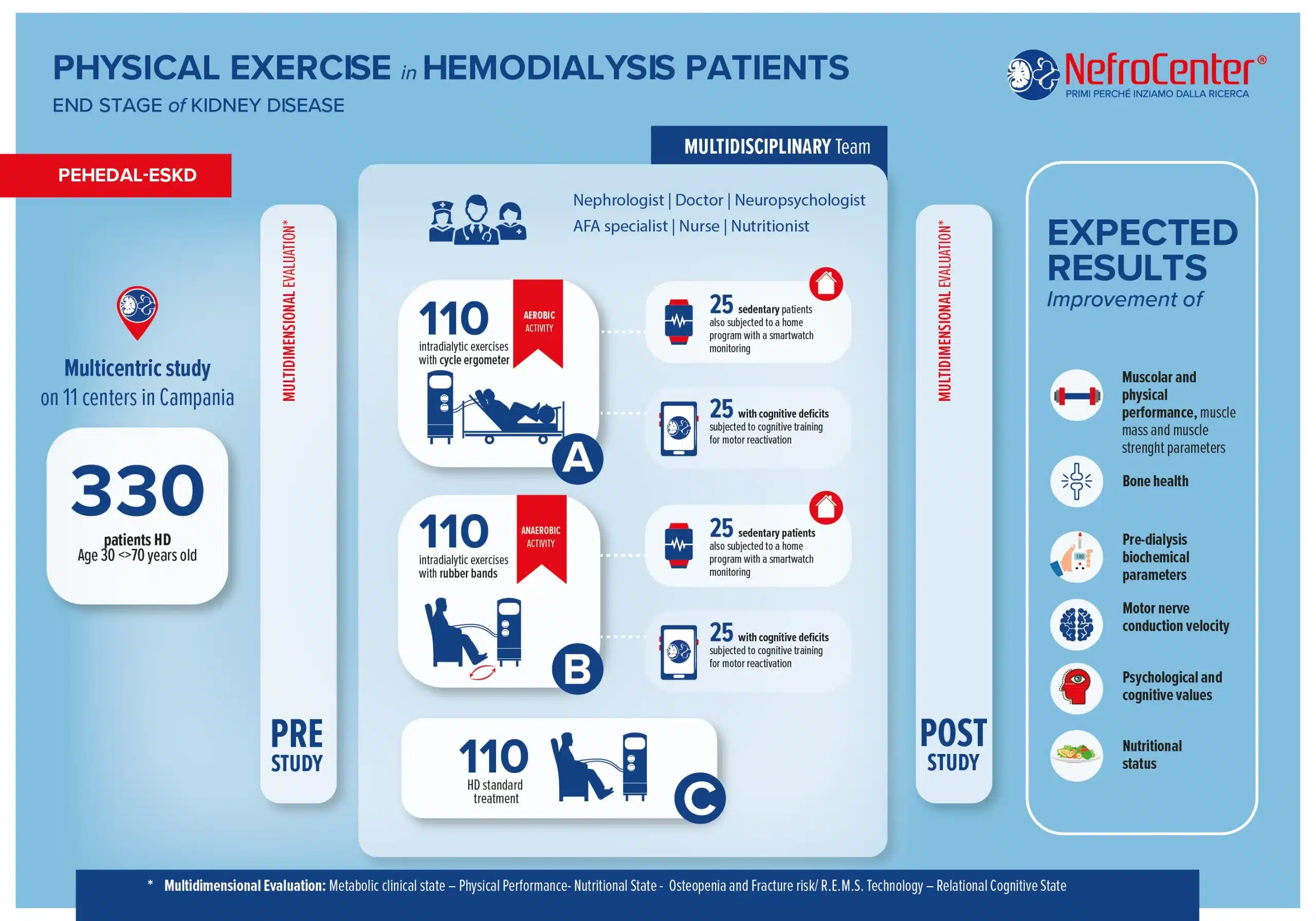Project Overview
End-stage chronic kidney disease (ESKD) is a complex condition that profoundly impairs patients’ quality of life, leading to: i) Physical frailty; ii) Cognitive decline; iii) Reduced functional capacity
In recent years, physical exercise has increasingly been recognised as an effective therapeutic strategy to enhance the wellbeing of dialysis patients, owing to its benefits on muscular and cardiovascular function, reduction of clinical complications, and decreased risk of hospitalisation
AIM
To evaluate the feasibility, tolerability, and efficacy of a structured exercise programme conducted during dialysis
To assess the impact of physical activity across multiple domains: clinical, psychological, cognitive, functional parameters, and overall quality of life
To deliver a sustainable, effective, and replicable programme
Method
330 haemodialysis patients for over three months, randomised into three groups: Arm A: aerobic exercise using a cycle ergometer; Arm B: anaerobic exercise with resistance bands; Arm C: control group with no physical activity (subgroup of 50 sedentary patients also followed a monitored home exercise programme using smartwatches; 50 patients showing early signs of cognitive deficits participated in cognitive training alongside physical exercise to slow cognitive decline)
Comprehensive baseline multidimensional assessments to be repeated after six months of intervention
Automatic data collection module with electronic health record, capturing continuous, secure monitoring from wearable devices (smartwatches, rubber bands, cycle ergometers) during dialysis sessions
Results
- Mean age of 56.56 ± 11 years; 63.3% male (Figure 2)
- Predominance of high fat mass, particularly among males (52%) (Figure 3)
- Higher average values of fat-free mass and body cell mass in males compared to females (Figure 4)
- Muscle strength reduced in 39% of males and in 18% of females (Figure 5)
- Majority of participants achieved fair to good performance levels (Figure 6)
- 42% patients of normal weight, 34% overweight, 21% obese (Figure 7)
- Cognitive functions preserved in almost all participants (Figure 8)
- Preference among enrolled patients for aerobic exercise using the cycle ergometer over resistance band training (Figure 9)
Conclusion
Ultimately, the project seeks to provide robust evidence supporting the inclusion of adapted physical exercise in future clinical guidelines for managing patients with ESKD
Significant improvements anticipated in muscle strength and performance, clinical-laboratory parameters, cognitive, psychological, and nutritional status
Please note: The clinical trial has now reached the fourth month of intervention; therefore, it is not yet possible to conduct a definitive quantitative analysis of the expected clinical or functional outcomes; final evaluation of outcomes will occur at the end of the six-month intervention period. Additionally, a number of dropouts were recorded due to various reasons including kidney transplantation, death, refusal to continue, or logistical challenges (clinical or personal) preventing attendance at scheduled sessions; the involvement of adapted physical activity experts, psychologists, and nutritionists is expected to enhance adherence and reduce dropout rates; the multidisciplinary approach and wearable device monitoring aim to ensure the model’s sustainability and ease of replication.

